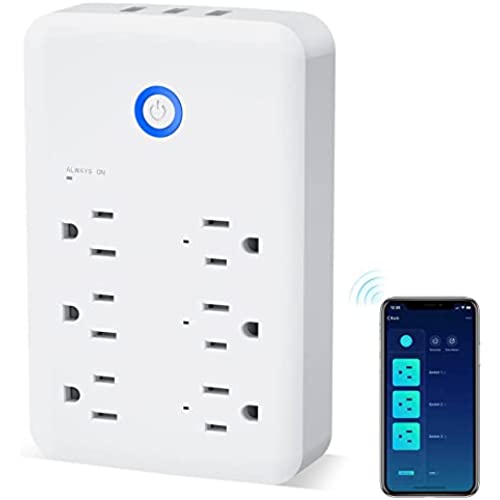
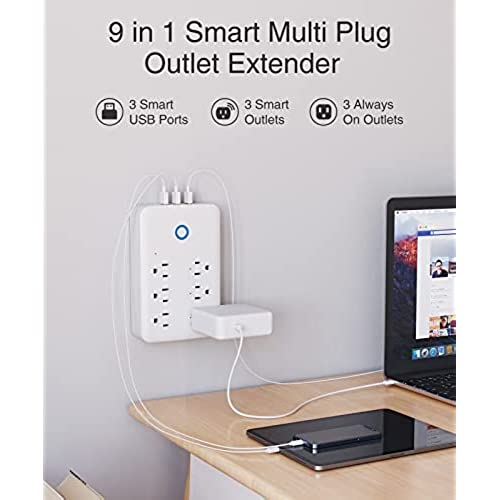
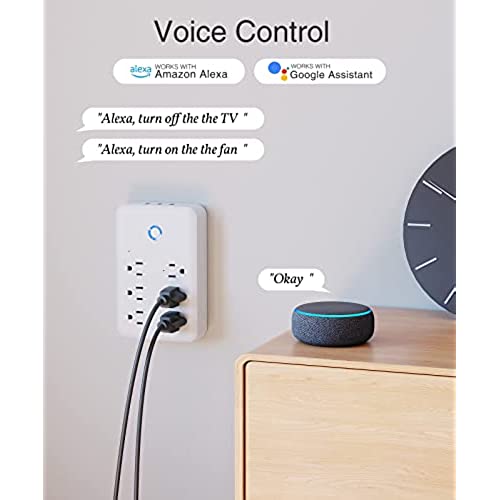
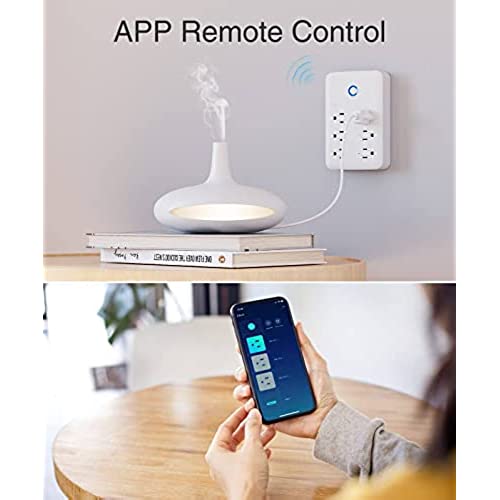
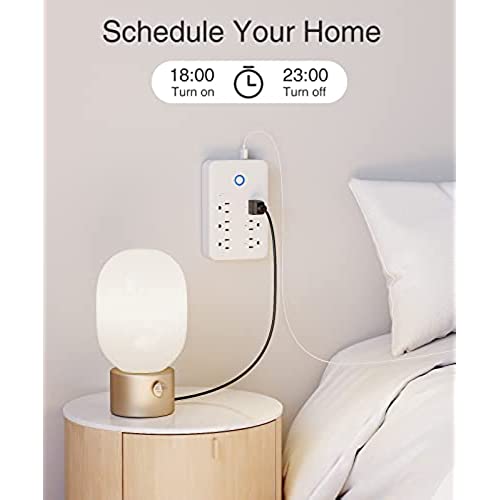
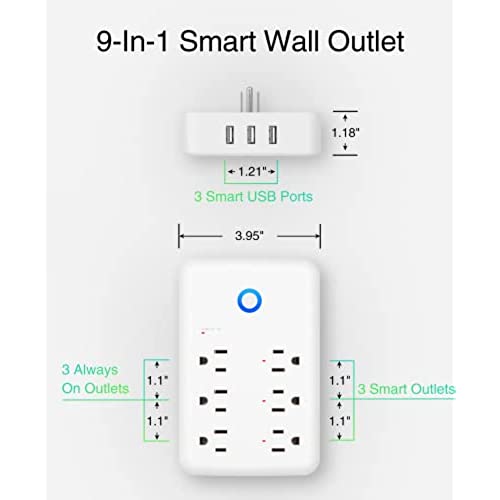
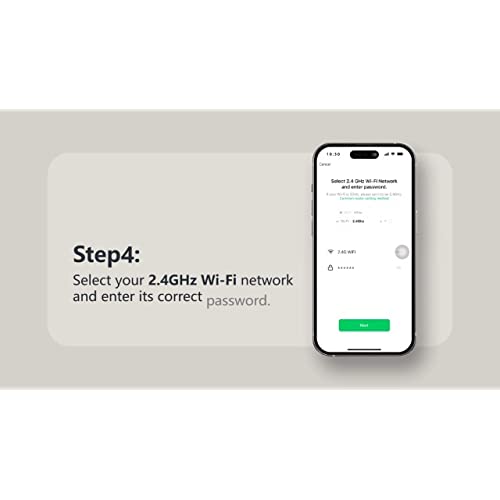







GHome Smart Plug Outlet Extender, USB Surge Protector 3 Individually Controlled Outlets and 3 USB Ports, WiFi Plug Works with Alexa Google Home, Outlet Timer Wall Adapter, 2.4GHz Wi-Fi Only, 15A/1800W
-

Debbie L
> 3 dayIt was easy to set up, and it works great with Alexa.
-

Jrob
> 3 dayWhile it took a minute to get the settings correct I gave up, finally working through the mind map of its requirements and my home wifi system I had to adjust some settings on my modem/router for it to get the signal. Once I did that it was seamless and works perfectly. The 3 USB ports were a bit hidden but also a plus, the WiFi function controls all 3 in tandem so plan for that, would be nice if they were all independent but not a deal breaker. I’ve ordered a second corded one for another setup!
-

jared
> 3 dayThe app is no longer available, basically just an expensive surge protector now.
-

Glogeworld
Greater than one weekI like how I was able to connect this product to Alexa. It features a built-in surge protector and outlet timer. I used it to remotely control and turn off my laptop and phone charger. One side can be on while the other side is off. Both sides can on together if you stuff plugged on them.
-

william
> 3 dayI spent hours trying to connect these plugs to my router. NO GO
-

Madge Rosenberg
> 3 dayIt is definitely a buy for the cost. Alexa can control 3 outlets and the other 3 you can use for anything and the added plus is the USB ports!
-

Annette Harris
> 3 dayI love being able to plug in multiple devices in one area. I dont have many plugs in my house and this has been a game changer. Not only can I use the USB ports for extra electronics, but I have more available plugs for all my entertainment devices.
-

pmoy
> 3 dayThere are 3 USB-A charge ports and 6 power outlets on this smart outlet extender. The 3 USB-A ports are controlled by a single relay. The 3 outlets on the left are always on. The 3 on the right are each controlled by a separate relay. Installation instruction says to download and use the Gosund app, which I didn’t do. I knew this is a Tuya device, so just used the generic Tuya Smart Life app that’s already installed on my iPhone. Pairing was straightforward even though the Smart Life app wasn’t able to detect the extender automatically. To manually pair, all I had to do was press “+,” then “Add Device,” then “Power Strip (Wi-Fi),” and follow on-screen instructions from the app. I don’t use Alexa so can’t comment on it. But I did get this outlet extender working with Google Assistant fairly quickly. Instructions in the user guide are pretty clear. I tested USB power output with a load tester connected to one USB port and nothing connected to the other two. I can only draw around 1A before the voltage dropped below 4.75V (USB 3 voltage spec is 4.75V to 5.25V). The USB ports do work and can be used for charging. But 1A is pretty lame. Good news for Home Assistant users: this device is supported by, and works well with the latest version of the Tuya Integration. However, it is not supported by the Local Tuya integration. The better news is that this outlet extender uses the ESP8266 chip, and is compatible with Tasmota (note – for those unfamiliar with Tasmota, it’s open-source firmware that can be flashed to ESP smart devices to allow local control). This extender is identical to the Gosund P2 Power Strip, so the Tasmota template for that device, which is available in the Tasmota Template Library can be used for configuring. I was able to use TuyaConvert to flash (note - TuyaConvert is an open-source program that allows Over-The-Air firmware flashing of ESP devices so you dont have to open the device and connect wires for flashing). When the 2nd incarnation of TuyaConvert was released a little over a year ago, I used it to flash at least 15 smart devices. Shortly thereafter, Tuya modified their firmware to block the exploit used by TuyaConvert. They also started using non-ESP processors in some of their devices, making those incompatible with Tasmota. TuyaConvert hadn’t worked for me since early last year. It took me 4 tries, but it worked this time. I was pleasantly surprised. So as of 1/20/2022, you can purchase this outlet extender from Amazon and flash it with Tasmota using TuyaConvert. I don’t know how long this will last. If for some reason, you can’t get TuyaConvert to work, you can still flash by wire, but it’s a bit cumbersome. The case on this extender is held together by 4 triangular screws; you’ll need a TA-23 driver bit. Once the case is opened, you can see the ESP8266 chip (see photos). Unfortunately, the GPIO pins are not accessible from the top side of the PCB. According to several people posting on forums, the relevant GPIO pins are easily accessible from the backside. But getting to the backside is not easy on this device. Three screws secure the PCB to the back plate of the case, but the PCB won’t come off the back plate even after the 3 screws are removed. The 3 power prongs are glued to the back plate, so those have to be de-soldered from the PCB. The bottom line is that wire flashing on this outlet extender is a big pain. I’m glad I was able to do an OTA flash with TuyaConvert. Overall, I think this is a very nice smart outlet extender. The best part for me is that I can use Tasmota and control it without the internet. But I think this is a good buy even if you don’t use Home Assistant or Tasmota. It pairs easily and works well with the Smart Life app and Google Assistant.
-

Rhea Graham
> 3 dayThumbs up!
-

gloria b
Greater than one weekNot sure about the traveling yet but it seems to work.
